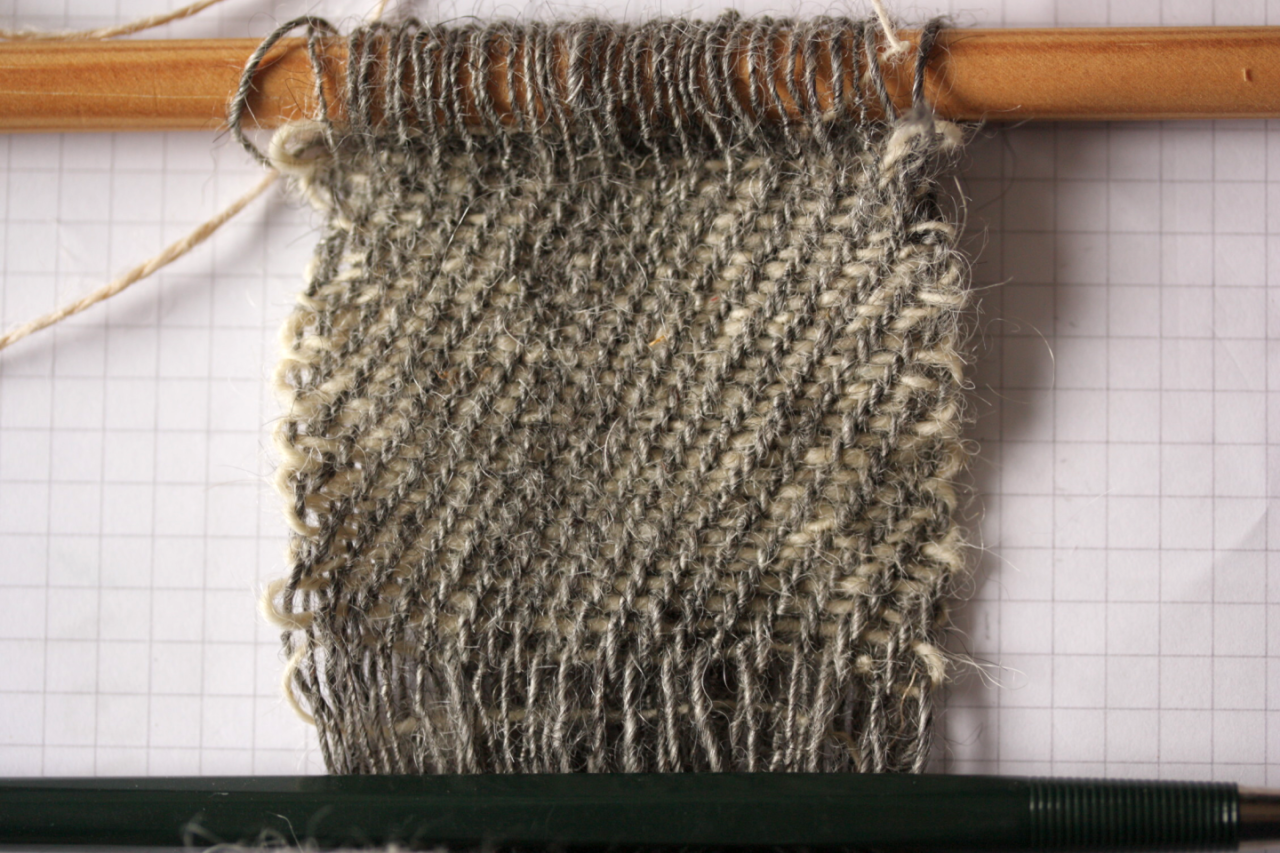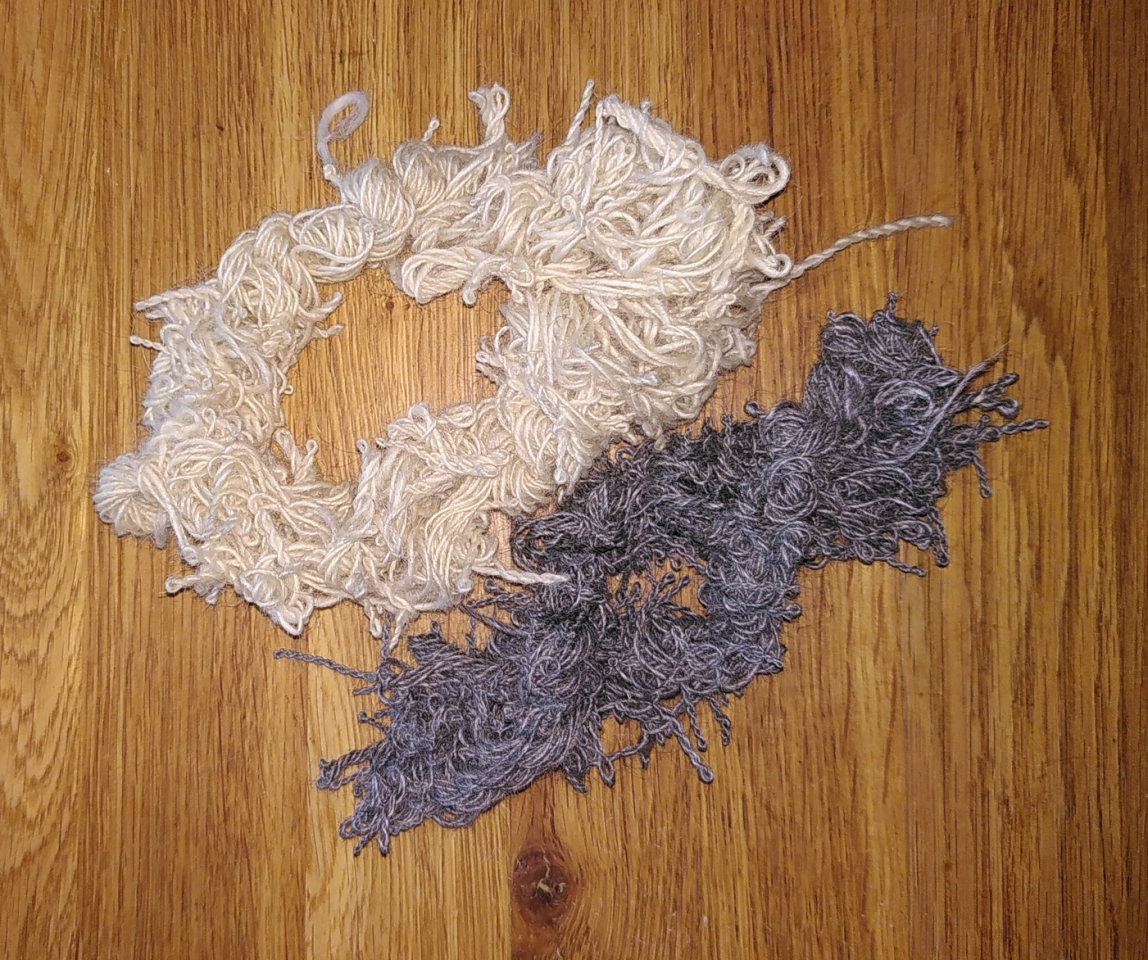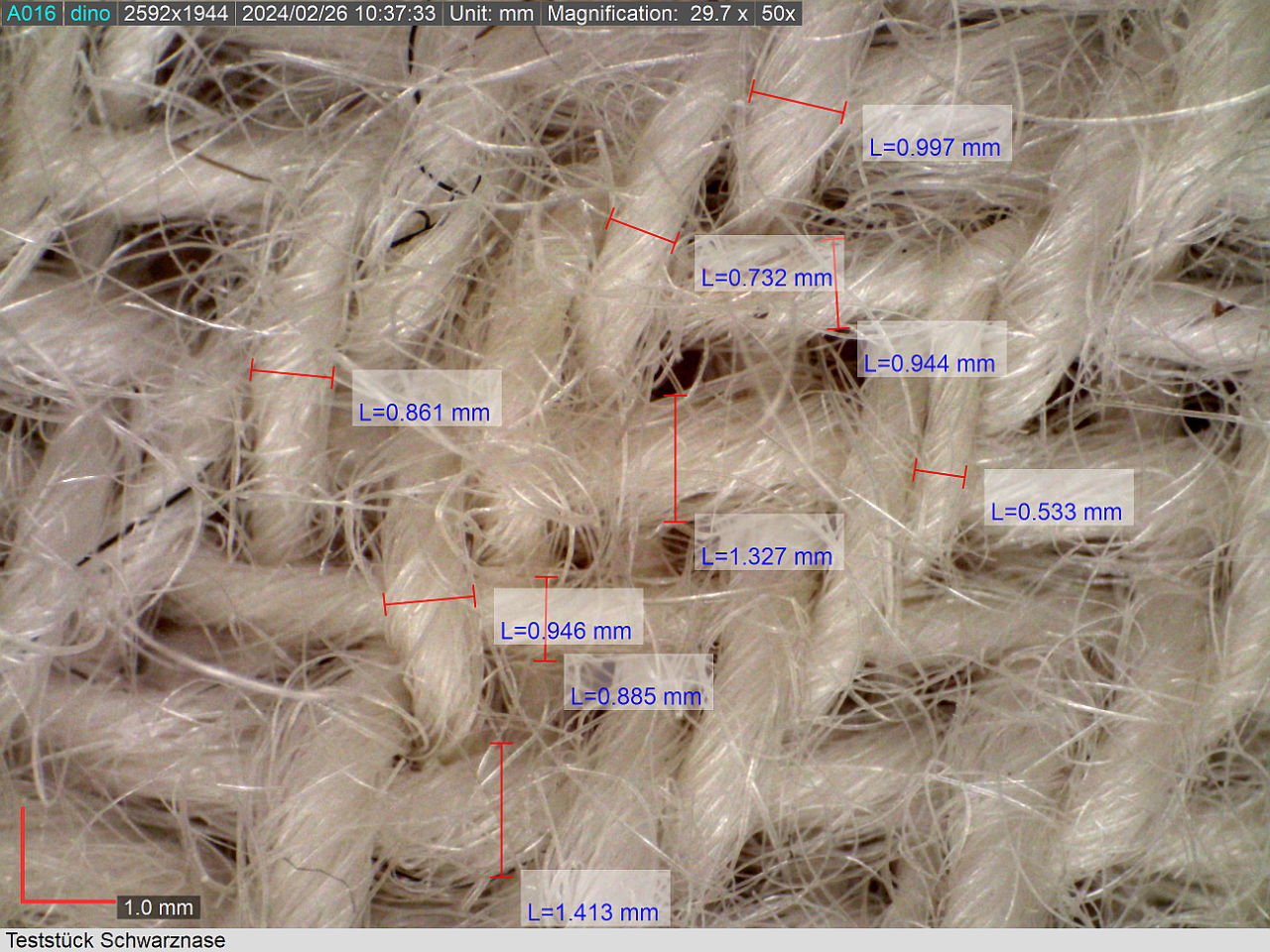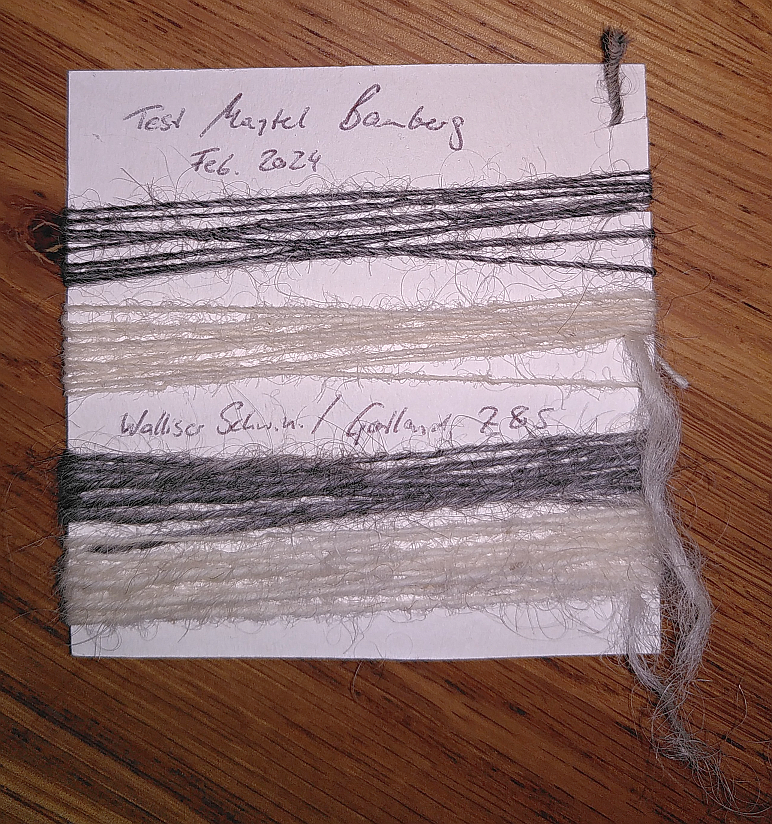Since I've decided to play it safe(r) and do another test run, here's the result of my not-so-perfect weaving:
Yarn twist in the warp is now definitely closer to the original. Also, my selvedges are quite uneven (sadly, that's pretty normal for me) and there's a bit of a weaving mistake at the start (but on the other side of the fabric, so you can't see it here).
I have some warp left, so I can do some fun weaving when I feel like it, and maybe improve a little bit... and otherwise, I'll take another closer look at the sample tomorrow and see how well it matches our goal fabric. And then... spinning can more or less start.








